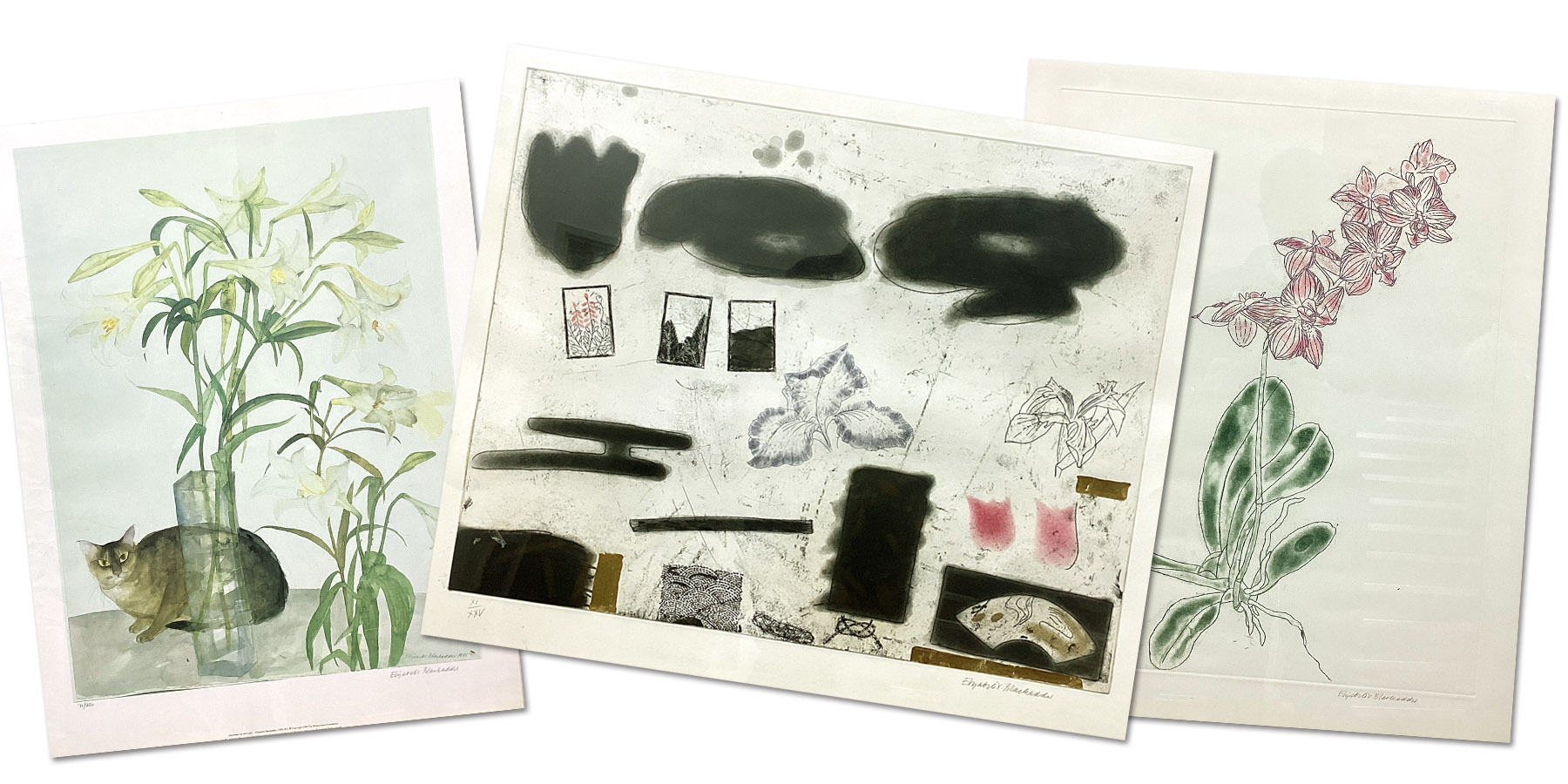Print Making
Printmaking, a centuries-old art form, has captivated artists and collectors alike
26/09/2024 Blog
This week we have been busy preparing for our Fine Art sale. Some of my favourite lots are in the picture section and in particular three limited edition signed prints by the Scottish artist Elizabeth Blackadder so I thought it would be interesting to tell you about the history of printmaking.

Printmaking, a centuries-old art form, has captivated artists and collectors alike with its diverse techniques and rich traditions. From the intricate lines of etchings to the vibrant hues of screen prints, the world of printmaking offers a vast array of possibilities for artistic expression. The roots of printmaking can be traced back to ancient civilisations, where techniques such as woodblock printing were used to reproduce images on various surfaces. However, it was during the Renaissance period that printmaking truly flourished, thanks to advancements in techniques such as engraving and etching. Artists like Albrecht Dürer and Rembrandt elevated printmaking to new heights, creating masterful works that showcased the medium's potential for detail and expression.
There are four main types of prints, firstly woodcuts. One of the oldest printmaking techniques, woodcut involves carving an image into a block of wood, leaving the raised areas to be inked and then printed. This method produces bold, graphic prints with a distinctive texture and character.
Secondly etchings which involves the use of acid to create intricate lines and textures on a metal plate. Artists apply a protective layer to the plate, then use a sharp tool to draw their design, exposing the metal beneath. The plate is then immersed in acid, which bites into the exposed areas, creating recessed lines that hold ink for printing.
Thirdly lithography which was developed in the late 18th century and relies on the principle that oil and water don't mix. Artists draw their design on a flat stone or metal plate with a greasy medium, such as crayon or ink. The plate is then dampened with water and inked, with the ink adhering only to the greasy areas. The image is transferred to paper using a press, resulting in prints with smooth, fluid lines and rich tones.
Finally screen printing also known as silkscreen or serigraphy, screen printing involves creating a stencil on a fine mesh screen, with ink forced through the open areas onto the printing surface below. This technique is prized for its versatility and ability to produce bold, vibrant prints with a wide range of textures and effects While printmaking has a rich history steeped in tradition, contemporary artists continue to push the boundaries of the medium with innovative techniques and approaches. Digital printmaking, for example, allows artists to create prints using computer software and printers, opening up new possibilities for experimentation and collaboration. Additionally, artists are increasingly exploring hybrid techniques that combine traditional printmaking methods with other mediums, such as painting or collage, resulting in works that defy categorisation and challenge conventional notions of printmaking.
For collectors, prints offer a unique opportunity to own works by renowned artists at a fraction of the cost of original paintings or sculptures. However, collecting prints requires careful consideration of factors such as edition size, condition, and provenance. Limited edition prints, which are produced in a predetermined number of copies, are often more valuable than open edition prints, which can be reproduced indefinitely. It's also important to ensure that prints are properly framed and displayed to protect them from damage caused by light, humidity, and other environmental factors.
If you are thinking of starting a collection of prints do come down to view one of our sales and, as always, the valuers at Sheffield Auction Gallery are available to answer any questions you may have.